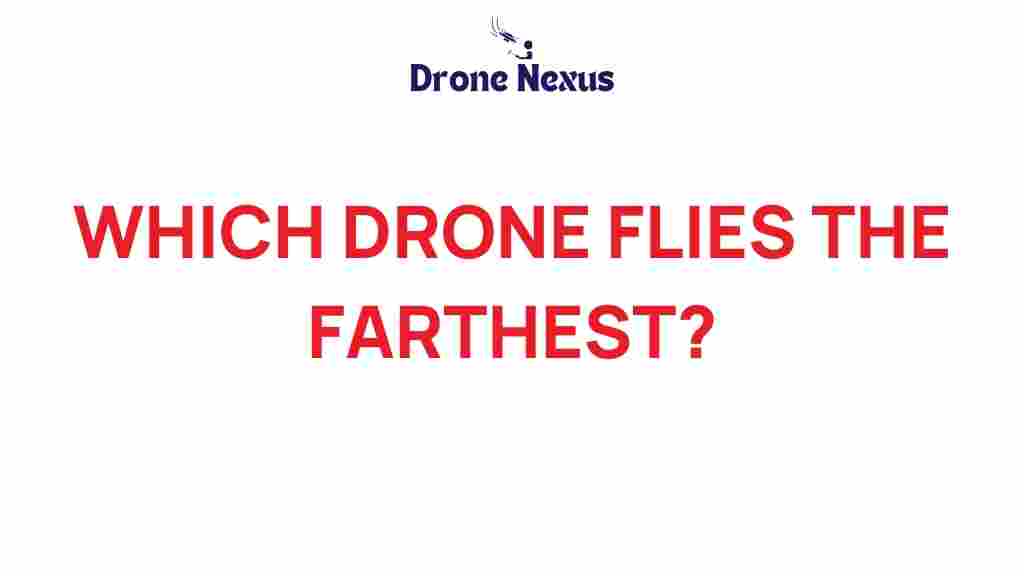Drones: The Quest for Distance
The world of drones has expanded significantly over the past few years, capturing the imagination of hobbyists, professionals, and industries alike. As the technology behind these flying machines evolves, so does the quest for distance—how far can a drone fly? This article will explore the factors that determine a drone’s flying range, the top models that excel in distance, and provide tips for maximizing your drone’s potential. Whether you’re using a drone for recreational purposes, aerial photography, or commercial applications, understanding how to achieve maximum distance is essential.
Understanding Drone Range
When discussing the distance a drone can fly, it’s important to understand several key concepts:
- Control Range: This refers to the maximum distance from which you can control your drone. It’s influenced by the drone’s transmitter and receiver capabilities.
- Battery Life: The duration a drone can stay airborne is directly linked to its battery capacity, which in turn affects how far it can fly.
- Environmental Factors: Weather conditions, obstacles, and interference can impact a drone’s flying range. For instance, flying in urban areas may reduce range due to signal interference.
Factors Affecting Drone Flight Distance
Several factors influence how far a drone can fly. Understanding these can help you choose the right model for your needs.
1. Battery Type and Capacity
The type of battery used in a drone plays a critical role in determining its flight distance. Most consumer drones use lithium polymer (LiPo) batteries, which provide a good balance of weight and power. However, not all batteries are created equal. Here are some key points to consider:
- Voltage: Higher voltage batteries can deliver more power, allowing for longer flight times.
- Capacity (mAh): A higher capacity battery will generally provide longer flight times, increasing the distance your drone can cover.
- Weight: Larger batteries weigh more, which can reduce flight efficiency and range.
2. Drone Design
The design of the drone itself can significantly affect its range. Factors include:
- Aerodynamics: Sleek, aerodynamic designs reduce drag, allowing drones to fly further.
- Weight: Lighter drones require less power to fly, which can improve range.
- Propulsion System: Efficient motors and propellers can enhance performance and distance.
3. Transmission Technology
The technology used for communication between the drone and the controller also impacts flight distance. Here are some common technologies:
- 2.4 GHz Frequency: Widely used in consumer drones, offering a good balance of range and penetration.
- 5.8 GHz Frequency: Provides better video transmission but may have a shorter control range.
- Lightbridge and OcuSync: Advanced transmission technologies in high-end models that can achieve impressive distances.
Top Drones for Distance Flying
If you’re looking to maximize your drone flying experience, consider investing in one of the following models known for their impressive range:
1. DJI Mavic 3
The DJI Mavic 3 is a top-tier drone that boasts an impressive range of up to 15 kilometers (9.3 miles). It features:
- A robust battery life of up to 46 minutes.
- A dual-camera system with a 4/3 CMOS sensor for stunning aerial photography.
- OcuSync 3.0 technology for enhanced transmission.
2. Autel Robotics EVO Lite+
The Autel EVO Lite+ offers a maximum flight distance of about 13 kilometers (8 miles). Key features include:
- A 1-inch CMOS sensor for high-quality imaging.
- A flight time of up to 40 minutes.
- Smart flight modes for easy navigation.
3. Skydio 2
The Skydio 2 is renowned for its autonomous flying capabilities and can achieve a maximum distance of 3.5 kilometers (2.2 miles). Noteworthy features include:
- Advanced obstacle avoidance technology.
- Impressive 4K video quality.
- Easy-to-use interface for beginners.
Step-by-Step Process to Maximize Drone Range
To ensure you get the most out of your drone’s flying distance, follow these steps:
1. Choose the Right Location
Select a location with minimal obstacles and interference. Open fields or rural areas are ideal for long-distance flights.
2. Pre-flight Checks
Before taking off, perform the following checks:
- Ensure the drone’s firmware is updated.
- Check battery health and charge levels.
- Inspect propellers for damage.
3. Optimize Settings
Adjust your drone’s settings for maximum distance. Consider:
- Using GPS mode for longer control ranges.
- Minimizing video transmission quality if not needed, to extend battery life.
- Engaging any distance-specific flight modes available.
4. Monitor Battery Levels
Keep an eye on your drone’s battery levels during flight. Always ensure you have enough charge to return safely.
Troubleshooting Tips for Distance Issues
Even with the best equipment, you might encounter issues affecting your drone’s flight distance. Here are some troubleshooting tips:
1. Check Signal Interference
If you find your drone losing connection, look for potential sources of interference. Wi-Fi networks, power lines, and other electronic devices can disrupt the signal.
2. Adjust Antenna Position
Ensure that the antennas on your remote controller are positioned correctly. Adjusting their angle can improve signal strength and control range.
3. Update Firmware
Outdated firmware can lead to performance issues. Regularly check for updates from the manufacturer to ensure optimal performance.
4. Test Different Locations
Sometimes, simply changing your flying location can resolve range issues. Try flying in different areas to identify potential problems.
Conclusion
The quest for distance in the world of drones is an exciting endeavor that has implications for both recreational and professional users. By understanding the factors that affect flight range, selecting the right model, and following best practices, you can maximize your drone’s potential. Whether you’re capturing breathtaking landscapes or surveying land for commercial purposes, knowing which drones fly the farthest and how to optimize their performance is essential.
For more information on drone technology and the latest trends, visit DroneDJ. If you’re interested in learning more about specific drone models, check out our detailed reviews here.
This article is in the category Technology and created by DroneNexus Team
